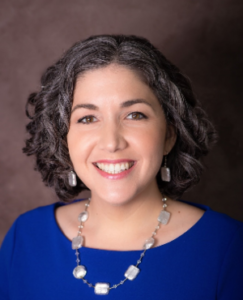
“Someone I love is experiencing poverty; what can I do?” This was a question at the heart of my personal life when I first encountered Circles USA. I had witnessed how someone could work so hard but still not overcome the many barriers to financial security, from catastrophic medical bills to workplace discrimination. This experience strengthened my conviction that we must address the root causes of poverty that hurt the people we love. The Circles model showed me how to carry this conviction into action. Our chapters help families get out of poverty and remove the barriers that get in the way. Most important is that the lived experiences of poverty–our stories, memories, and hard-learned lessons–shape the approach to change. One of my priorities, as executive director, is to further document the many ways that Circles chapters are pursuing systemic change in their communities.
We Take the Big View
Each Circles chapter has a Big View Team to tackle systemic change. This team includes community members drawn from government, schools, nonprofits, businesses, and philanthropies. Circles participants with first-hand knowledge of poverty share their perspectives to shape immediate, practical solutions as well as policy change.
Each Big View Team:
– Analyzes the service gaps and systems barriers that limit economic mobility. (For example: How is limited access to a bus route keeping Circles participants from job interviews, and what can we do to change that?) – Builds community capacity for civic engagement. (What is preventing Circles participants from voting in the upcoming local election, and how can we prove to them that their vote matters?) – Raises awareness of the issues. (How can we amplify the voices of Circles participants in dialogue with those in the community who have inherent biases against people experiencing poverty?) – Engages local, state, and federal elected officials. (Which politicians can advance specific change on this issue? How do we mobilize them?) – Implements a community-driven action plan to achieve measurable change (What are our short-term and long-term goals?)
We Advocate For Ourselves—and Each Other
Whether we promote voter education, testify to government officials, or work with city planners to grow infrastructure, participants develop the skills to tackle a multitude of barriers to economic security. Once participants grow their confidence in advocating for themselves, there is no end to the issues they can tackle.
”Being a part of a Town Hall meeting with three U.S. Representatives has given me a newfound confidence in the way the system works,” said Bonita Thomas, former Circles participant and now staff at Circles West Orange in Florida. “I feel like my voice was heard. I believe this gave the Representatives a look at the people that are on the ground being impacted by the decisions they make.”
Circles volunteers likewise benefit from participation on their Big View Team. As volunteer Sandi Wallace from Circles West Orange reflected: “Having an opportunity to teach Circles participants about the electoral process and to provide information about candidates and issues required me to do more homework than ever before. I was way more engaged in the election this year, and I know that others from Circles were more engaged too. The information shared at Big View meetings helped us feel informed and empowered to vote. Increasing voter education and turnout reinforces in me the belief that Circles is benefiting our whole community.”
We Engage in Dialogue
To inspire community deliberation, Circles USA recently published a template for research and analysis on seven different issues that typically affect families experiencing poverty: quality jobs, broadband access, healthcare, housing, transportation, childcare, and credit/lending. Key questions posed include: When it comes to this issue, what are the needs of people experiencing poverty? What alternatives are available? What workarounds are people using? In what ways will solving this issue benefit the community? Do participants know the current policies related to this topic? How can we leverage this collective knowledge to find potential solutions?
Designed by Jenny Lipfert, all seven of these slide deck templates are available for use in your communities. Click here to download.
In Part Two, we feature Big View examples from across the country. Plus, there’s an invitation to share your story for a forthcoming publication.
With excitement about the work ahead,
Jamie Haft, Circles USA Executive Director

